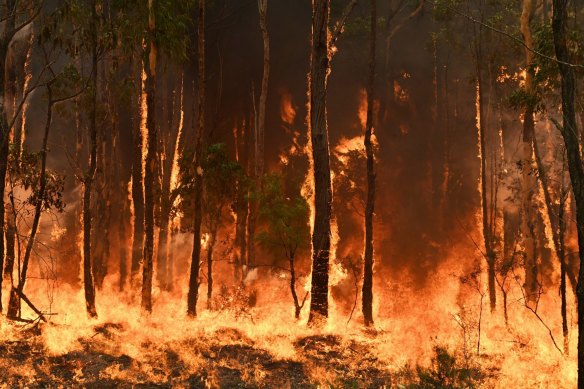Deciphering the Significance of a Detailed BAL Report for Your Property
Deciphering the Significance of a Detailed BAL Report for Your Property
Blog Article
Exactly How BAL Report Impacts Shrub Fire Defense Procedures
In the realm of bush fire protection, the Building Strike Level (BAL) report stands as an essential device that considerably influences the safety and security and strength of homes in fire-prone locations - BAL Report. The influence of a BAL evaluation prolongs much beyond simple documents; it acts as the foundation for determining the suitable building requirements and fire security procedures essential to minimize the threats posed by bushfires. As communities grapple with increasingly severe fire seasons, understanding how the BAL report forms these safety actions comes to be paramount for contractors, policymakers, and house owners alike
Understanding the Bushfire Attack Level

Relevance of BAL Record Evaluation

In Addition, the BAL report assessment acts as a foundational step in following legal obligations and requirements associated with bushfire defense. Regional councils and authorities commonly mandate the entry of a BAL report as component of the planning and structure authorization process to ensure that buildings are adequately safeguarded versus bushfire dangers. Falling short to perform a complete BAL record evaluation can result in insufficient defense steps, leaving buildings susceptible to ruining bushfire events.
Building Specifications Based Upon BAL
An extensive understanding of the Bushfire Strike Level (BAL) allows residential property owners to implement building standards tailored to their specific danger profile. Building requirements based on BAL are critical in alleviating the impact of bushfires on residential or commercial properties. The BAL score classifies the prospective danger a property encounters during a bushfire on a range from BAL-Low to BAL-FZ (Flame Area) Each BAL level represents details building demands detailed in the Australian Common AS3959-2018 Construction of Buildings in Bushfire-Prone Areas. For circumstances, buildings identified as BAL-Low might only need basic actions such as clearing particles and maintaining gardens, while those in higher BAL groups require even more durable steps like coal screens, learn this here now fire-resistant materials, and secured home windows. Complying with these construction requirements not just improves the architectural durability of the home yet also improves the overall safety of residents throughout a bushfire occasion. Consequently, home owners should very carefully consider their BAL ranking and abide by the corresponding building criteria to properly guard their homes and passengers.
Executing Fire Protection Procedures
With the foundation of construction standards based on Bushfire Strike Degree (BAL) in area, the focus currently changes towards the practical implementation of fire defense procedures to fortify residential properties versus bushfire risks. Passive procedures consist of making use of fire-resistant building products, setting up ember guards on vents, securing gaps in wall surfaces and roofing systems, and keeping a clear area around the residential property cost-free from flammable plant life. By integrating both passive and energetic methods, buildings can considerably reduce their important link vulnerability to bushfire cases and increase the safety and security of passengers.
Shielding Houses Versus Bushfires
Efficiently protecting homes versus the devastating effects of bushfires calls for a extensive and proactive strategy to fire security steps. Homeowners staying in bushfire-prone areas must prioritize the execution of different methods to boost their property's durability against wildfires. One basic facet is developing a defensible space around the home by preserving a clear zone without flammable products. This consists of frequently cutting greenery, getting rid of dead plants, and making sure a risk-free range in between structures and trees. Setting up fire-resistant roof materials can likewise significantly reduce the risk of coal strikes and direct fire contact. Furthermore, sealing vents and spaces to stop ash intrusion, as well as including fire-resistant windows and doors, can help fortify the home's protection against bushfires. Buying a reputable water resource, such as a well-maintained automatic sprinkler or a dedicated water storage tank, is critical for providing water throughout fire emergency situations - BAL Report. By accepting an aggressive position and incorporating these protective measures, property owners can considerably boost their opportunities of guarding their homes versus bushfires.
Verdict
In conclusion, the Bushfire Attack Degree (BAL) record plays a vital function in figuring out the necessary protection measures versus bushfires. Implementing fire protection actions based on the BAL report is crucial in safeguarding buildings from prospective bushfire hazards.
In analyzing bushfire risk to buildings, comprehending the Bushfire Attack Level (BAL) is a crucial element for implementing reliable security steps. Generally, a clear understanding of the Bushfire Attack other Degree is vital for implementing ample defense steps and minimizing the influence of bushfires on homes.

Report this page